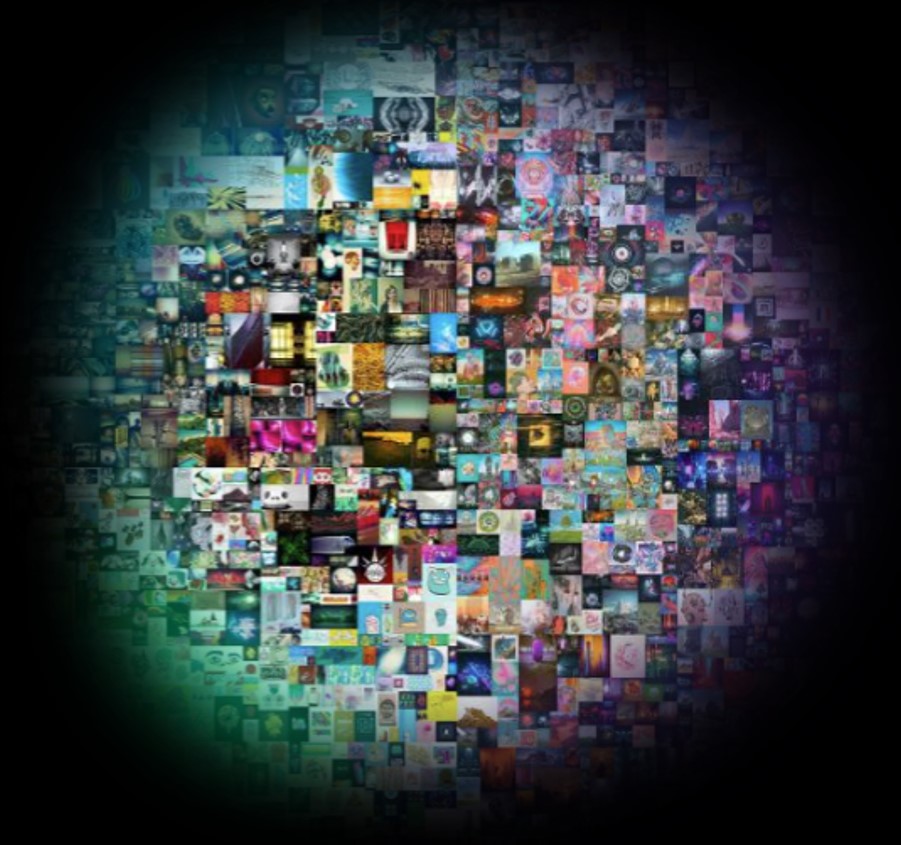
Beeple’s $69 Million NFT Sale: Three Years On – Was It Worth It?
Three years ago, the art world changed forever. On March 11, 2021, Christie’s auction house sold a purely digital artwork for a staggering $69.3 million. The artist? Mike Winkelmann, better known as Beeple. The piece? Everydays: The First 5000 Days—a collage of 5,000 individual artworks spanning 13 years. This wasn’t just a moment for Beeple; it was a defining moment for digital art and NFTs. But as we reach the anniversary of this record-breaking sale, one big question remains—was it really worth it?
Who is Beeple?
Beeple isn’t your traditional artist. Born in Wisconsin and trained in computer science, he started his career designing corporate websites before venturing into digital art. His style blends pop culture, politics, and satire, often with surreal and dystopian undertones.
In 2007, Beeple started a project called Everydays—creating and posting one digital artwork every day. That dedication led to Everydays: The First 5000 Days, a single digital collage showcasing his artistic evolution.
The Historic Sale: Breaking Barriers in the Art World
On March 11, 2021, Christie’s auctioned Everydays: The First 5000 Days as an NFT. The final price? $69,346,250.
This sale wasn’t just about the price tag. It was historic because:
- It was the first fully digital artwork sold by a major auction house.
- Beeple became one of the most valuable living artists overnight.
- It validated NFTs as a legitimate art medium.
For digital artists, this sale was a watershed moment. It proved that digital creations could command the same prestige (and price) as traditional paintings and sculptures.
Three Years Later: What’s the Value of Beeple’s NFT Today?
Fast forward to 2025, and the NFT market looks very different. The speculative frenzy of 2021 has cooled, with NFT prices plummeting across the board. So, is Everydays still worth nearly $70 million?
While there’s no official resale price, the reality is that many high-value NFTs have significantly depreciated. Market sentiment has shifted, and the hype that once drove sky-high valuations has been replaced by skepticism. Some argue that Beeple’s piece holds historical significance, making it a long-term store of value. Others suggest that without new buyers willing to pay such sums, its real value today could be far lower.
The Other Side of NFTs: Hype, Speculation, and Money Laundering
While Beeple’s sale brought legitimacy to digital art, it also opened the floodgates for speculative buying, shady transactions, and even potential money laundering.
NFTs offer anonymity, making them a convenient vehicle for illicit financial flows. The lack of regulation in 2021 allowed some questionable transactions, with insiders ‘wash trading’ NFTs—selling assets to themselves to inflate prices artificially. Although regulatory bodies are now paying more attention, NFTs remain a grey area in financial compliance.
The broader NFT market has also seen scams, rug pulls, and projects that promised big returns only to vanish overnight. While the technology behind NFTs is sound, their application has often leaned towards speculation rather than sustainable innovation.
Beyond the Bubble: The Future of NFTs and Digital Art
Despite the decline in speculative hype, NFTs aren’t dead. Instead, they’re evolving. Today, NFTs are being used for:
- Digital identity and authentication (blockchain-based credentials)
- Tokenising real-world assets (property, collectibles, even shares in businesses)
- Gaming and metaverse integration (unique in-game items with actual ownership)
Beeple himself continues to innovate, moving beyond static NFTs to projects like Human One, a hybrid digital-physical artwork that changes over time. The future of NFTs likely lies in their utility rather than pure speculation.
Final Thoughts
Beeple’s historic NFT sale wasn’t just a financial milestone—it was a cultural shift. It challenged old-school art institutions, empowered digital artists, and opened new possibilities in the world of blockchain and NFTs.
But three years on, we must ask: was Everydays truly worth $69 million, or was it a product of its time? The answer depends on whether the NFT space matures beyond speculation and finds lasting value in real-world applications.
One thing’s for sure—Beeple’s name will always be tied to the moment digital art was taken seriously. Whether that moment was a revolution or a bubble remains up for debate.
Want to learn more about NFTs and digital asset planning? Explore our latest insights at Plutus Crypto Consulting.
